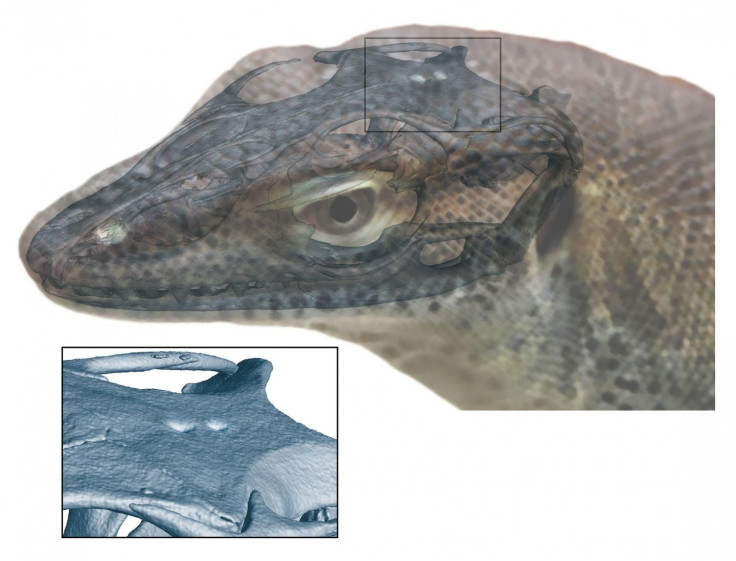This Weird Lizard Had Four Eyes, Roamed Earth 34 Million Years Ago

Scientists found fossils of a weird monitor lizard, one that roamed the earth millions of years ago and had four eyes instead of the two regular eyes.
The creature, dubbed Saniwa ensidens, went extinct some 34-million-years ago. It thrived during its time, but what was not known was that the land-dweller also had an added pair of the said bodily feature, something that has never been observed in a jawed terrestrial creature. The creature had one routine pair of eyes accompanied by two eye-like photo-sensory organs on top of the head, Gizmodo reported.
These structures, dubbed pineal and parapineal organs, have been referred to as the third eye of the animal, but they didn’t have normal features associated with the ability to see such as eyeballs or eyelids. Instead, they served as modern-day light sensors, allowing the animal to detect the presence of light and use that information to correct its orientation or to keep a track of its seasonal cycles.
"The fossils that we studied were collected in 1871, and they are quite scrappy — really banged up," Krister Smith, the lead author of the latest study, said in a statement. "One would be forgiven for looking at them and thinking that they must be useless. Our work shows that even small, fragmentary fossils can be enormously useful." He even noted that calling the two photosensitive organs "eyes" may seem far-fetched, but is actually unquestionable as scientists have been using it since the 19th century.
Covered by a transparent layer of skin, the additional two eyes seem different in too many ways, but they developed just like our conventional human eyes or as an outward growth of developing neural tube connected to the brain and spinal cord. The structures also had a lens and retina-like structure separated by a fluid in between.
“The functions of the pineal organ — even when it doesn’t form an eye — in lower vertebrates include geographic orientation,” Smith told Gizmodo. “There are at least two proposed mechanisms for this, both of which rely on short-wavelength (blue) light. We know that short-wavelength light is rapidly attenuated upon entering the head. So it is plausible that the production of a fourth eye could be related to the improved perception of short-wavelength light and therefore to geographic orientation.”
Scientists believe understanding more about this feature could give them more insight into the evolution of these organs millions of years ago and how they functioned.
The discovery was detailed in a paper titled "The Only Known Jawed Vertebrate with Four Eyes and the Bauplan of the Pineal Complex" and was published in Current Biology.
© Copyright IBTimes 2024. All rights reserved.





















